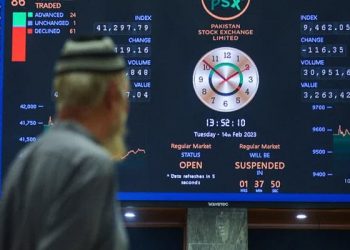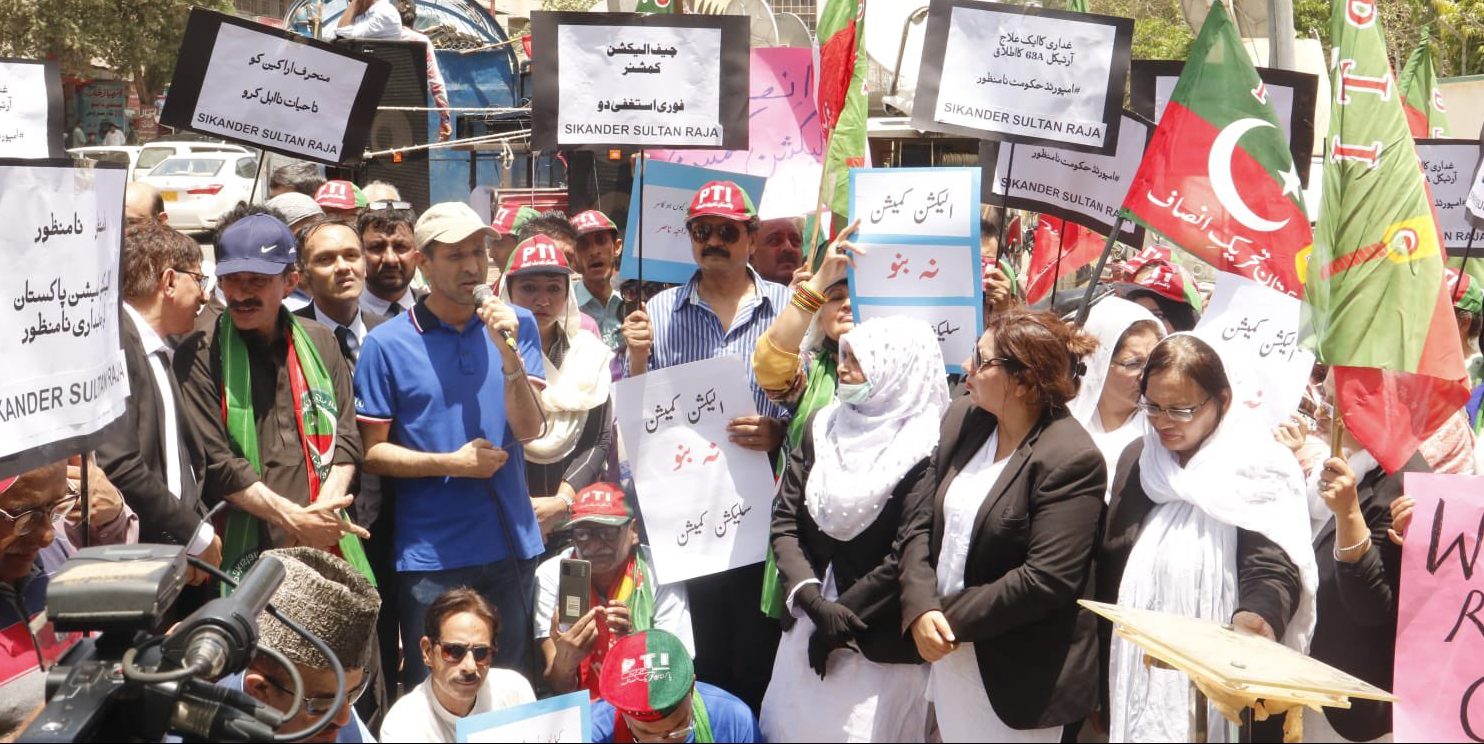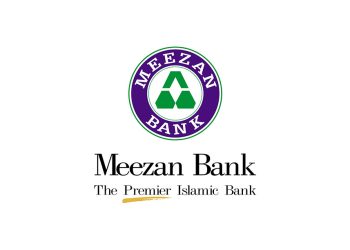PAKISTAN BUSINESS NEWS: MARKET RECAP – BP SUCCESSFULLY RAISES RS458.53 BILLION THROUGH PIB-PFL AUCTION
In its recent auction held on Wednesday, the State Bank of Pakistan (SBP) achieved a significant milestone by selling Pakistan Investment Bond – Floating Rate (PIB-PFL) semiannual bonds worth Rs458.53 billion for durations of 5 and 10 years. This remarkable achievement surpassed the target set at Rs280 billion.
During the auction, the cut-off price for the 5-year PIB-PFL semiannual bond was determined at Rs96.1823, while for the 10-year bond, it stood at Rs94.2124.
The SBP received overwhelming bids amounting to Rs1.33 trillion for PIB-PFL semiannual bonds and Rs638.2 million for PIB-PFL quarterly bonds. Out of these bids, the central bank accepted bids totaling Rs458.53 billion for the semiannual floaters, while no bids were accepted for the quarterly PIB.
The settlement date for the successful bids is scheduled for May 16, 2024.
The proceeds raised through the PIB-PFL semiannual auction comprise the sale of 5-year and 10-year semiannual PIBs, with Rs381.78 billion and Rs76.75 billion raised, respectively.
Of the total amount raised, Rs438 billion was generated through competitive bids, while Rs20.53 billion was raised through non-competitive bids.
The target for the PIB-PFL semiannual auction was to raise Rs160 billion through the sale of 5-year and 10-year PIB bonds, with Rs80 billion allocated to each.
In contrast, the target for the PIB-PFL quarterly auction was to raise Rs120 billion, with Rs60 billion earmarked for the sale of 2-year and 3-year PIB-FRF bonds, respectively.
It’s noteworthy that in the previous auction held on April 30, 2024, the SBP sold PIBs-PFL worth Rs194 billion against a target of Rs280 billion, with cut-off prices standing at 95.8364 and 93.5557 for the 5-year and 10-year PIB-PFL semiannual bonds, respectively.
SBP SELLS MARKET TREASURY BILLS (MTBS) WORTH RS639.52 BILLION IN AUCTION
In its latest auction conducted on Wednesday, the State Bank of Pakistan (SBP) successfully sold Market Treasury Bills (MTBs) amounting to Rs639.52 billion for durations of 3, 6, and 12 months. This exceeded the target set at Rs450 billion.
The cut-off yields for the MTBs were as follows: 21.5973% for 3 months, 21.2899% for 6 months, and 20.4052% for 12 months. These figures depict a decline of 6 basis points (bps), 10 bps, and 49 bps, respectively, compared to the previous auction.
The total amount offered in the auction was Rs1.88 trillion, out of which the SBP accepted bids totaling Rs639.52 billion. Bids received amounted to Rs312.4 billion for 3-month MTBs, Rs438.55 billion for 6-month MTBs, and Rs1.13 trillion for 12-month MTBs. The SBP accepted Rs160.82 billion for 3-month MTBs, Rs318.87 billion for 6-month MTBs, and Rs77 billion for 12-month MTBs. Additionally, the SBP picked up Rs82.83 billion from the non-competitive auction, bringing the total amount accepted to Rs639.52 billion.
The bid-to-cover ratio, which indicates the amount of bids received versus the amount sold, decreased to 2.94 from 3.52 in the previous auction. In other words, the SBP accepted approximately 33.99% of the total bids it received.
In the preceding auction held on April 30, 2024, the SBP sold MTBs worth Rs253 billion against a target of Rs300 billion, with cut-off yields of 21.6601% for 3 months, 21.3874% for 6 months, and 20.8989% for 12 months.
PAKISTAN’S EXTERNAL DEBT: A CAUSE FOR CONCERN OR CONTROLLED GROWTH?
Pakistan’s external debt situation presents a mixed picture. While the latest central bank data shows a slight decrease in overall debt compared to the previous quarter, year-on-year figures reveal a continued upward trend. This raises questions about the sustainability of Pakistan’s external debt and its potential impact on the economy.
Breaking Down the Numbers:
According to the State Bank of Pakistan (SBP), Pakistan’s external debt and liabilities stood at $130.4 billion at the end of the third quarter of fiscal year 2024 (Q3 FY24). This represents a marginal decrease of $1.45 billion or 0.79% compared to the previous quarter. However, compared to the same period last year (Q3 FY23), the external debt has increased by $2.92 billion or 2.21%.
Public Debt Takes the Lead:
Public external debt, which includes government borrowing, IMF loans, and foreign exchange liabilities, constitutes the majority (75.5%) of Pakistan’s external debt. While the government’s overall debt decreased slightly compared to the last quarter, it remains higher year-on-year. This suggests ongoing reliance on external borrowing to finance government activities.
Dissecting the Debt Composition:
Within public external debt, long-term debt shows a slight decrease compared to the previous quarter but a slight increase year-on-year. However, short-term debt has seen a significant jump of 13.46% compared to the same period last year. This rise in short-term debt can indicate a potential increase in financing costs and vulnerability to external shocks.
The Role of Other Borrowers:
The data also highlights the external debt held by public sector enterprises (PSEs), banks, and the private sector. PSE debt has shown a slight decrease compared to the last quarter but an increase year-on-year. Similarly, private sector debt saw a slight increase compared to the previous quarter but a decrease year-on-year. Overall, these figures suggest a mixed bag of borrowing patterns across different sectors.
Looking Ahead: Balancing Growth and Sustainability
Pakistan’s external debt situation requires careful management. While external borrowing can be a tool for financing development projects, excessive reliance can lead to debt servicing issues and limit economic growth.
The Path Forward:
To ensure sustainable growth, Pakistan needs a multi-pronged approach. Increasing exports and attracting foreign investment can help generate foreign currency reserves and reduce dependence on external borrowing. Additionally,implementing fiscal discipline and focusing on long-term economic development projects can create a more stable and resilient economy.
PAKISTAN’S CENTRAL GOVERNMENT DEBT SOARS, RAISING CONCERNS ABOUT FISCAL SUSTAINABILITY
Pakistan’s central government debt has surged to a record high of Rs65.37 trillion ($381.4 billion) by March 2024,according to data released by the State Bank of Pakistan (SBP). This represents a significant increase of 14.44% year-on-year (YoY) compared to Rs57.12 trillion in March 2023. Even on a monthly basis, the debt has grown by 0.88%,highlighting the ongoing trend of rising government liabilities.
Breaking Down the Debt:
The bulk of the debt (Rs43.43 trillion) is domestic, with long-term domestic debt accounting for the largest share at Rs34.85 trillion. This signifies a reliance on borrowing within Pakistan to finance government spending. Interestingly,borrowing through Naya Pakistan Certificates, a government initiative targeting retail investors, has declined by 32.59% YoY.
External Borrowing:
While domestic borrowing dominates, Pakistan has also relied on external sources to bridge its fiscal gap. The data reveals that Rs21.85 trillion is owed through long-term foreign loans, with an additional Rs88.44 billion in short-term external debt.
Reasons for the Increase:
The primary driver behind the rising debt is the need to cover Pakistan’s fiscal deficit, which occurs when government spending exceeds its revenue. The report suggests increased borrowing from both domestic and foreign sources to bridge this gap.
Potential Implications:
This rising debt burden raises concerns about Pakistan’s fiscal sustainability. A high debt level can limit the government’s ability to invest in essential areas like education and healthcare. Additionally, large debt servicing costs can strain the national budget, potentially leading to cuts in public services.
Looking Ahead:
To address this challenge, Pakistan needs to implement a multi-pronged approach. Increasing tax collection and reducing non-essential spending can help generate more revenue and reduce reliance on borrowing. Additionally, pursuing economic growth policies that attract investment and boost exports can create a more sustainable fiscal future.
PAKISTAN’S NATIONAL SAVINGS SCHEMES WITNESS OUTFLOWS, RAISING CONCERNS ABOUT INVESTOR CONFIDENCE
Data released by the State Bank of Pakistan (SBP) reveals a concerning trend in Pakistan’s National Savings Schemes (NSS). In March 2024, net payments from these schemes reached Rs9.7 billion, significantly higher than the Rs3.27 billion recorded in the previous month.
Breaking Down the Outflows:
The data highlights a net outflow from key savings instruments within the NSS. Defence Saving Certificates (DSCs) witnessed a net withdrawal of Rs2.58 billion, indicating investors withdrawing more funds than they deposited. Similarly,Regular Income Certificates (RICs) experienced a substantial outflow of Rs6.8 billion.
Limited Positive Trends:
While the overall trend is negative, there were some positive developments. Special Savings Certificates (SSCs) attracted an inflow of Rs421.95 million, and Prize Bonds saw an injection of Rs246.58 million. Additionally, other savings categories within the NSS recorded a combined net inflow of Rs992.16 million.
A Year of Outflows:
It’s important to note that this trend isn’t an isolated event. The data reveals that throughout fiscal year 2024, net outflows from NSS stood at a staggering Rs112.9 billion. This persistent trend suggests a potential decline in investor confidence in these schemes.
Possible Reasons for the Outflow:
Several factors could be contributing to these outflows. Rising inflation might be discouraging investment in fixed-income instruments like NSS, as returns may not keep pace with inflation. Additionally, investors might be seeking higher returns elsewhere, potentially in the stock market or real estate.
Potential Implications:
These outflows could impact the government’s ability to raise funds through NSS. The government relies on these schemes to finance its budget deficit. A decline in investor participation could necessitate alternative funding sources,potentially leading to higher borrowing costs.
PAKISTAN MERCANTILE EXCHANGE (PMEX) SEES TRADING ACTIVITY SURGE ON TUESDAY
The Pakistan Mercantile Exchange (PMEX) witnessed a significant boost in trading activity on Tuesday, with total turnover soaring by 38% DoD (Day-over-Day) to reach Rs23.4 billion. This upsurge was accompanied by a trade volume of 18,266 lots. However, the closing index for the exchange dipped slightly by 0.09% DoD, settling at 10,639.
Gold Steals the Show:
Gold emerged as the star performer, contributing a substantial chunk to the trading volume. Transactions involving gold reached a staggering Rs11.57 billion, highlighting strong investor interest in the precious metal.
Diversified Trading:
Beyond gold, PMEX witnessed active trading in a variety of other commodities. Currencies, traded through the COTS platform, recorded a value of Rs3.35 billion. Additionally, the NSDQ 100 index saw significant activity with transactions worth Rs2.52 billion.
Investor Interest Spreads Across Commodities:
Silver, Crude Oil, and Platinum also attracted considerable investor attention, with trading volumes reaching Rs1.21 billion, Rs1.1 billion, and Rs2.64 billion, respectively.
Trading in Other Instruments:
The trading activity extended to other instruments as well. Natural Gas transactions stood at Rs158.65 million, while those involving DJ, Copper, S&P 500, and Brent amounted to Rs154.12 million, Rs436.6 million, Rs125.62 million, and Rs19.1 million, respectively.
Agricultural Commodities See Action:
The agricultural commodities segment wasn’t left out either. Cotton witnessed active trading, with 36 lots valued at Rs47.4 million changing hands.
Overall, Tuesday’s trading session at the PMEX reflected a positive trend with a significant increase in overall activity. The surge in gold trading and the diversified participation across various commodities indicate a dynamic and evolving market.
PAKISTAN’S MONEY SUPPLY: RISING BROAD MONEY RAISES QUESTIONS
Pakistan’s broad money supply, measured by M2, has seen a significant increase in recent weeks. According to the State Bank of Pakistan’s (SBP) provisional accounts, M2 reached Rs33.75 trillion by May 3rd, 2024, reflecting a rise of Rs418.31 billion compared to the previous week. This upward trend raises questions about its potential impact on the Pakistani economy.
Breaking Down the Increase:
The surge in M2 is primarily driven by an increase in total deposits held with banks, which rose by Rs384.07 billion week-on-week. This suggests that people and businesses are depositing more money into banks.
However, currency in circulation within the economy has actually decreased by Rs32.05 billion compared to the previous week. This could indicate a preference for depositing money in banks or a shift towards digital transactions.
Year-on-Year Growth:
Looking at the bigger picture, M2 has increased by Rs2.23 trillion compared to June 2023. While currency in circulation has decreased slightly year-on-year, total deposits held with banks have grown substantially, contributing to the overall rise in M2.
What Does It Mean?
A rising money supply can potentially stimulate economic activity by making it easier for businesses and individuals to access credit. However, it can also lead to inflationary pressures if the increase in money supply is not accompanied by a corresponding increase in the production of goods and services.
Looking Ahead:
The SBP will need to monitor the money supply closely and take appropriate measures to manage inflation. It’s important to ensure that the growth in M2 translates into real economic growth without causing price instability.
Key Takeaways:
- Pakistan’s broad money supply (M2) has increased significantly in recent weeks.
- This is primarily driven by an increase in total deposits held with banks.
- While currency in circulation has decreased slightly, the overall money supply has grown.
- The SBP needs to monitor inflation and take steps to manage it if necessary.
PAKISTANI RUPEE (PKR) DIPS SLIGHTLY AGAINST US DOLLAR, MIXED PERFORMANCE AGAINST OTHER CURRENCIES
The Pakistani Rupee (PKR) witnessed a slight depreciation against the US Dollar in Wednesday’s interbank session. The PKR closed at Rs. 278.26 per USD, marking a decrease of 8.06 paisa compared to the previous day’s closing rate of Rs.278.18 per USD.
Intraday Movement and Open Market Rates:
The PKR exhibited limited movement throughout the day, with an intraday high of Rs. 278.55 and a low of Rs. 278.25. In the open market, exchange companies offered a buying rate of Rs. 276.93 and a selling rate of Rs. 279.45 for the USD.
Performance Against Other Major Currencies:
The PKR experienced mixed results against other major currencies:
- Losses: PKR depreciated against the Euro (EUR) by Rs. 1.31, closing at Rs. 301.25 compared to the previous day’s Rs. 299.94.
- Losses: The British Pound (GBP) also gained value against the PKR, closing at Rs. 350.45, up from Rs. 348.55.
- Losses: The Swiss Franc (CHF) saw a slight gain of Rs. 1.12, closing at Rs. 307.36 compared to Rs. 306.24.
- Losses: The PKR lost a negligible amount (0.5 paisa) against the Japanese Yen (JPY), closing at Rs. 1.7827.
- Gains: The Chinese Yuan (CNY) strengthened against the PKR, closing at Rs. 38.52, up from Rs. 38.44.
- Gains: The Saudi Riyal (SAR) witnessed a slight gain of Rs. 2.15, closing at Rs. 74.2.
- Gains: The UAE Dirham (AED) also gained Rs. 2.09, closing at Rs. 75.74.
Year-to-Date Performance:
Despite the slight depreciation against the USD today, it’s important to consider the broader context. Year-to-date (YTD),the PKR has actually appreciated against the USD by Rs. 3.60 or 1.29%. Similarly, for the current fiscal year, the PKR has gained Rs. 7.73 or 2.78% against the USD.
Money Market Rates Remain Unchanged:
The benchmark 6-month Karachi Interbank Bid and Offer rates remained unchanged at 21.31% and 21.56%, respectively.
PAKISTAN GOVERNMENT BORROWING SURGES, RAISING CONCERNS ABOUT FISCAL SUSTAINABILITY
Pakistan’s government debt continues to rise at an alarming rate. According to the central bank’s weekly estimates, the government acquired an additional Rs387.54 billion in debt during the week ending May 3rd, 2024. This brings the total net borrowing for the current fiscal year (FY) 2024 to a staggering Rs5.17 trillion.
A Trend of Rising Borrowing:
The report highlights a concerning trend. Government borrowings for FY 2024 have consistently exceeded those of previous years. This suggests a growing reliance on debt to finance government spending.
Breaking Down the Borrowing:
The government’s borrowing can be categorized based on its purpose:
- Budgetary Support: This refers to borrowing to cover the budget deficit, which occurs when government spending exceeds its revenue. The weekly net borrowing for budgetary support stood at Rs356.9 billion.
- Commodity Operations: This category includes borrowing used to finance the import and management of essential commodities. Weekly net borrowing for commodity operations was Rs30.91 billion.
- Others: This category encompasses various other borrowing needs. A total of Rs274.03 million was retired (paid back) from this category during the week.
Cumulative Borrowing:
Looking at the cumulative figures for FY 2024, the government has borrowed Rs5.42 trillion for budgetary support,Rs252.66 billion for commodity operations (with some previous borrowing being retired), and Rs2.91 billion for other purposes (with some previous borrowing being retired).
Sources of Financing for Budgetary Support:
The two main sources of financing for budgetary support are:
- State Bank of Pakistan (SBP): This fiscal year, the government has actually paid back a net sum of Rs622.11 billion to the central bank. This suggests previous borrowing is being repaid.
- Scheduled Banks: These banks have provided a net total of Rs6.04 trillion in loans to the government this fiscal year.
Concerns and Implications:
The rising government debt raises concerns about Pakistan’s fiscal sustainability. A high debt burden can limit the government’s ability to invest in essential areas like education and healthcare. Additionally, large debt servicing costs can strain the national budget, potentially leading to cuts in public services.
PAKISTAN STOCK MARKET MAKES HISTORIC DEBUT, BUT PROFIT-TAKING DAMPENS GAINS
The Pakistan Stock Exchange (PSX) witnessed a historic event on Wednesday as the benchmark KSE-100 index surpassed the 75,000 mark for the first time ever. However, the euphoria was short-lived as profit-taking set in, leading the index to close at 74,663.98, a gain of just 0.18%.
Key Points:
- Historic High: The KSE-100 index breached the 75,000 barrier, a significant milestone for the Pakistani stock market.
- Profit-Taking: Investors eager to lock in profits after the surge led to selling near the peak, causing the index to retreat.
- Intraday Movement: The index witnessed significant volatility, trading within a range of 674.45 points. The intraday high reached 75,115.33, while the low dipped to 74,440.88.
- Trading Volume: The KSE-100 index saw a total volume of 251.46 million shares traded.
MSCI Index Update:
- In the latest Morgan Stanley Capital International (MSCI) May 2024 index review, only one Pakistani security was added to the Frontier Market Index.
- Pakistan’s weight in the index is expected to be around 3.7%, maintaining its position as the second most liquid market in the MSCI FM space with an average daily traded value of $54.2 million for the current fiscal year to date (FY24TD).
Sectoral Performance:
- The KSE-100 index received support from sectors like Commercial Banks, Automobile Parts & Accessories, Food & Personal Care Products, Fertilizer, and Cement.
- Conversely, sectors like Pharmaceuticals, Oil & Gas Exploration Companies, Leather & Tanneries, Power Generation & Distribution, and Oil & Gas Marketing Companies dragged the index down.
Company Performance:
- Companies like BAHL, UBL, MEBL, MCB, and EFERT contributed the most points to the index.
- PPL, SRVI, HINOON, ENGRO, and PSO were the biggest detractors.
Broader Market:
- The All-Share index also closed with a gain, settling at 48,463.97.
- Total market volume and traded value witnessed an increase compared to the previous session.
GOLD PRICES IN PAKISTAN RISE, BUT ASSOCIATION ABSORBS SOME COST INCREASE
Gold prices in Pakistan witnessed a significant increase on Wednesday. Here’s a breakdown of the key points:
- Price Increase: The price of 24-karat gold surged by Rs2,900 per tola, reaching Rs244,100.
- Price Absorption: The Karachi Sarafa Association claims the actual cost of gold is Rs3,000 higher. They’ve absorbed this difference to keep the price affordable due to a “significant reduction in purchasing power.”
- Comparison: This increase follows a gain of Rs5,500 per tola for 24-karat gold last week.
- 10-Gram Price: The price of 24-karat gold per 10 grams also rose to Rs209,191, reflecting an increase of Rs2,487.
- 22-Karat Gold: The price of 22-karat gold also increased to Rs191,758 per 10 grams.
- Silver Unchanged: Silver prices remained stable, with 24-karat silver priced at Rs2,650 per tola and Rs2,271.94 per 10 grams.
- Global Market: International gold prices also saw a positive trend, with spot gold trading near $2,369.18 an ounce,up 0.47%.
Possible Reasons for Price Increase:
- The global rise in gold prices could be influencing the domestic market.
- Fluctuations in the Pakistani rupee against other currencies might also be a factor.
- Increased demand for gold as a safe haven investment due to economic uncertainties is another possibility.
Impact of Absorbed Cost:
The Karachi Sarafa Association absorbing some of the cost increase suggests they’re trying to make gold more accessible despite rising prices. This could potentially stimulate gold buying but may also affect their profit margins.
Overall, the gold market in Pakistan is experiencing a price hike. The reasons behind this increase and the long-term impact of the price absorption by the gold association remain to be seen.
BALOCHISTAN GLASS RESTARTS FURNACE AT UNIT-1, BOOSTING PRODUCTION CAPACITY
Balochistan Glass Limited (BGL) recently announced positive news for its operations. Here’s a quick breakdown:
- Furnace Restart: BGL has successfully initiated the heating/firing process of the furnace located at its Unit-1 facility in Hub, Baluchistan.
- Production Capacity Boost: This furnace restart brings back online a production capacity of 110 metric tons of glass per day.
- Product Range: Unit-1 is equipped to manufacture various products aligning with BGL’s core business, including:
- Pharma glass packaging
- Glass beverage bottles
- Glass containers
- Glass tableware
Significance:
This furnace restart signifies a potential increase in BGL’s overall production capacity. This could lead to several positive outcomes for the company:
- Increased Revenue: With more products being manufactured, BGL can potentially generate higher revenue.
- Meeting Market Demand: The additional production capacity could help BGL meet the existing market demand for their products more effectively.
- Enhanced Competitiveness: Increased production might allow BGL to compete more effectively in the market.
Overall, restarting the furnace at Unit-1 appears to be a positive step for Balochistan Glass. It has the potential to improve the company’s production capabilities and financial performance.
It’s important to note that:
- The official announcement from BGL likely doesn’t disclose the reason behind the previous shutdown of the furnace.
- The actual impact of the restart on production and revenue may take some time to materialize and will depend on various factors.
SEARLE PAKISTAN UP FOR SALE: THE SEARLE COMPANY TO DIVEST SUBSIDIARY
The Searle Company Limited (SEARL) has made a significant announcement regarding its subsidiary, Searle Pakistan Limited (formerly OBS Pakistan Limited). Here’s a breakdown of the key points:
- Divestment Approved: The Board of Directors of SEARL has approved the principle of disposing of their 100% ownership (shareholding and control) of Searle Pakistan Limited.
- Negotiation Authorization: SEARL’s management is now authorized to negotiate and finalize the deal terms with potential buyers. Once finalized, these terms will be presented to the Board for approval.
- Acquisition History: In May 2019, SEARL acquired OBS Pakistan Limited, which was later renamed Searle Pakistan Limited.
- Business of Searle Pakistan: The company is primarily involved in manufacturing pharmaceuticals and other consumer products.
Reasons for Divestment (Unclear):
The announcement from SEARL doesn’t explicitly state the reasons behind their decision to sell Searle Pakistan Limited.Here are some possible explanations:
- Strategic Shift: SEARL might be looking to focus on its core business areas and divest non-essential subsidiaries.
- Financial Reasons: SEARL could be aiming to improve its financial performance by selling off a potentially underperforming asset.
- Attractive Offer: SEARL might have received a lucrative offer for Searle Pakistan that they find difficult to refuse.
Impact on Searle Pakistan (Uncertain):
The potential sale of Searle Pakistan to a new owner could have various implications:
- Change in Management and Strategy: The new owner may implement new management and strategic direction for the company.
- Employee Uncertainty: Employees of Searle Pakistan might face uncertainty regarding their job security and future career prospects under new ownership.
- Potential Growth Opportunities: A new owner could invest in the company and help it grow its market share and profitability.
Overall, the decision by SEARL to divest Searle Pakistan is a significant development. The reasons behind the sale and the future impact on Searle Pakistan remain unclear at this point. Investors in SEARL and employees of Searle Pakistan will likely be following the situation closely as negotiations progress.
ENGRO POWERGEN ACQUISITION GETS NEW PLAYERS: LIBERTY POWER HOLDING, SOORTY ENTERPRISES, AND PROTON ENGINEERING JOIN THE RACE
The acquisition process for a significant stake in Engro Powergen Qadirpur Limited (EPQL) has seen a change in the acquiring entities. Here’s a quick breakdown:
- Revised Acquiring Entities:
- Liberty Power Holding (Private) Limited (New)
- Soorty Enterprises (Private) Limited (Previously Included)
- Proton Engineering (Private) Limited (New)
- Previous Acquiring Entities (Replaced):
- Liberty Mills Limited
- Zain Ashraf Mukaty
- Temoor Ashraf Mukaty
- Ahmed Ashraf Mukaty
- Affinity Capital Pvt Limited
- Najeeb Malik
- Nadeem Malik
- Shahzad Malik
- Announcement Source: Arif Habib Limited, the manager of the offer, informed Pakistan Stock Exchange (PSX) about this change through a notice.
- Reason for Change (Unknown): The announcement doesn’t disclose the reason behind the revision in the acquiring entities.
Possible Implications:
- New Players, New Strategies: The involvement of Liberty Power Holding and Proton Engineering, who weren’t part of the initial group, could bring new approaches and strategies to the acquisition process.
- Shifting Dynamics: The replacement of several previously announced acquirers might indicate changes in the negotiation dynamics or the overall structure of the deal.
What to Watch Out For:
- Further Announcements: Investors and stakeholders should keep an eye on future announcements from Arif Habib Limited or Engro Powergen regarding the acquisition process.
- Rationale Behind the Change: Understanding the reasons behind the revision in acquiring entities could provide valuable insights into the deal’s motivations and potential outcomes.
PAKISTAN’S FERTILIZER OFFTAKE SHOWS MIXED PICTURE IN APRIL 2024
National Fertilizer Development Company’s (NDFC) report reveals a decline in overall fertilizer offtake for April 2024 compared to the same month last year.
Here’s a breakdown of the key points:
- Overall Decline: The country’s total fertilizer offtake dropped by 6.3% YoY, reaching 244,000 tons in April 2024 compared to 260,000 tons in April 2023.
- Nutrient-Wise Breakdown:
- Nitrogen: Increased significantly by 40.5%.
- Phosphate: Up by a substantial 84.4%.
- Potash: Experienced a decrease of 9.2%.
Product-Wise Offtake:
- Urea: Offtake fell by 19.7% to 328,000 tons in April 2024 compared to April 2023.
- DAP (Diammonium Phosphate): Increased significantly by 82% to 93,000 tons in April 2024 compared to April 2023.
Supply and Demand:
- Urea: Total availability was 697,000 tons, with a closing balance of 368,000 tons after April’s offtake.
- DAP: Total availability was 208,000 tons, with a closing balance of 117,000 tons after April’s offtake.
Domestic Fertilizer Prices:
- Nitrogenous fertilizers: Prices saw a slight increase.
- Phosphate fertilizers (except SSP): Prices decreased.
International Fertilizer Prices:
- Urea: A downward trend was observed in the Arabian Gulf.
- DAP: Prices remained within a certain range.
Possible Reasons for the Decline in Overall Offtake:
- Several factors could be influencing the overall decline, but the report doesn’t provide specific reasons.
- Changes in crop sowing patterns or weather conditions might be at play.
- Fluctuations in fertilizer prices could also be a contributing factor.
Positive Aspects:
- The significant increase in DAP offtake suggests a growing demand for this fertilizer, potentially indicating a focus on crops that require more phosphorus.
- Increased nitrogen offtake, despite the overall decline, is still a positive sign.
Uncertainties:
- The reasons behind the specific nutrient offtake trends (nitrogen and phosphate up, potash down) are unclear without further information.
- The long-term impact of these trends on agricultural productivity remains to be seen.
PAKISTAN’S LARGE-SCALE MANUFACTURING GROWTH STUTTERS IN MARCH 2024
Pakistan’s Large-Scale Manufacturing Industries (LSMI) output witnessed mixed results in March 2024, according to the Pakistan Bureau of Statistics (PBS) report. Here’s a breakdown of the key points:
Yearly Growth:
- Increase: LSMI production grew by 2.04% YoY in March 2024 compared to March 2023.
Monthly Decline:
- Sharp Drop: However, there was a significant decline of 9.35% MoM compared to February 2024.
Performance in 9 Months (July-March):
- Slight Decline: Cumulatively, LSMI has a marginal decline of 0.1% for the nine months of FY24 (July-March) compared to the same period last year.
Sectoral Performance (9 Months):
- Positive Contributors: Food, Tobacco, Garments, Paper & Board, Petroleum Products, Chemicals,Pharmaceuticals, Furniture sectors contributed positively to the overall growth.
- Negative Contributors: Textile, Iron & Steel Products, Electrical Equipment, Automobiles sectors showed a decline in production.
Comparison with Last Year (July-March):
- Increase: Production in Food, Wearing Apparel, Coke & Petroleum Products, Chemicals, Fertilizers,Pharmaceuticals, Machinery and Equipment, and Furniture sectors increased compared to the same period last year.
- Decrease: Production in Tobacco, Textile, Paper & Board, Non Metallic Mineral Products, Iron & Steel Products,Electrical Equipment, Automobiles, and Other Transport Equipment sectors decreased.
Uncertainties:
- The report doesn’t provide specific reasons behind the significant MoM decline in March.
- It’s unclear if this is a one-time dip or indicative of a larger trend.
Possible Explanations for MoM Decline:
- Supply chain disruptions
- Raw material shortages
- Seasonal factors impacting certain industries
OIL PRICES RISE ON INVENTORY DRAWDOWN EXPECTATIONS AND WEAKER DOLLAR
Oil prices edged higher on Tuesday, driven by several factors:
- Inventory Drawdown: Market sources anticipate a decrease in U.S. crude oil and gasoline stockpiles, potentially confirmed by official data tomorrow.
- Strong Demand: Expectations of rising fuel demand during the summer driving season are keeping prices supported.
- Weaker Dollar: A depreciation in the U.S. dollar makes oil cheaper for investors holding other currencies.
- China’s Stimulus Measures: China’s plan to inject funds into its economy, the world’s largest oil importer, is seen as positive for oil demand.
Current Prices:
- Brent Crude: Trading at $82.63 per barrel, up 0.30%.
- West Texas Intermediate (WTI): Near $78.13 per barrel.
Looking Ahead:
- U.S. Inventory Data: Official data release on Wednesday is expected to confirm the anticipated decline in crude stockpiles.
- U.S. CPI Data: This data, also released on Wednesday, could influence the Federal Reserve’s interest rate decisions, impacting economic activity and potentially fuel demand.
- China’s Economic Data: Data released on Friday will provide further insights into China’s economic health and its impact on oil demand.
- Canadian Oil Supply Concerns: A wildfire approaching Fort McMurray, a key center for Canada’s oil sands industry, adds a layer of uncertainty to the supply outlook.
PAKISTAN CRACKS DOWN ON DECEPTIVE MARKETING IN BEAUTY INDUSTRY
The Competition Commission of Pakistan (CCP) is taking a strong stance against misleading marketing practices in the beauty product industry. Here’s a breakdown of the key points:
The Problem:
- Beauty companies are making unsubstantiated claims about their products being “natural,” “organic,” “sustainable,” “pure,” and “chemical-free.”
- These claims lack scientific evidence and mislead consumers.
- The use of misleading terminology and imagery on labels and marketing materials further aggravates the issue.
CCP’s Actions:
- The CCP has issued notices to 12 companies for engaging in “greenwashing” practices.
- This sets a precedent for ethical marketing that prioritizes environmental responsibility and consumer trust.
Impact on Consumers:
- Deceptive marketing can lead to:
- Misguided purchase decisions
- Potential health risks for consumers who are unaware of the true ingredients
CCP’s Goals:
- Ensure fair market competition within the beauty industry.
- Promote responsible marketing practices based on:
- Accuracy
- Integrity
- Reliability
- Truthfulness
- Encourage companies to compete based on:
- Product safety
- Innovation
- Value for money
- Quality
- Effectiveness
Enforcement Measures:
- The CCP will take strict action against companies found guilty of deceptive marketing, including penalties.
Collaboration for Consumer Protection:
- The CCP is working with:
- Consumers
- Producers
- Retailers
- Stakeholders
- This collaboration aims to:
- Ensure fair competition
- Protect consumer rights
Consumer Role:
- Consumers are encouraged to:
- Remain vigilant
- Report instances of deceptive advertising, false claims, or health hazards to the CCP
PAKISTAN STRENGTHENS COMPETITION LAW AWARENESS THROUGH COLLABORATION
The Competition Commission of Pakistan (CCP) and the Directorate of Legal Education (DLE) have joined forces to enhance awareness of competition law among law students and lawyers in Pakistan. Here’s a breakdown of the key points:
Signatories:
- Competition Commission of Pakistan (CCP)
- Directorate of Legal Education (DLE) – established by the Pakistan Bar Council
Goals of the MoU:
- Raise awareness about competition law and its importance.
- Equip law students and lawyers with the knowledge and skills to navigate competition issues.
- Foster a culture of fair competition within the legal community.
Collaboration Activities:
- Workshops, focus groups, lectures, and seminars on competition law.
- Integrating a competition law module into law degree programs (LL.B and LL.M).
- Introducing competition law in the Bar Vocational Course.
- Guest lectures on competition law and policy.
- Continued legal education opportunities.
Importance of the Initiative:
- Better-equipped lawyers can effectively address complex competition issues.
- Increased awareness of competition law can help identify and prevent anti-competitive practices.
- A fairer competition landscape benefits the Pakistani economy as a whole.
Statements from Key Figures:
- Minister Azam Nazir Tarar: Views the MoU as a significant step for capacity building and a more competitive Pakistan.
- Chairman CCP Dr. Kabir Ahmed Sidhu: Emphasizes the need for public education about competition law and the importance of whistleblowers in identifying cartels.
- Both leaders: Express confidence that the collaboration will significantly advance competition law in Pakistan.
CITI PHARMA SWITCHES TO SOLAR POWER: ENVIRONMENTAL AND ECONOMIC BENEFITS DRIVE THE MOVE
Citi Pharma Limited (CPHL) announced a significant shift towards sustainability by transitioning to solar power.Here’s a breakdown of the key points:
- Embracing Solar: CPHL will replace traditional energy sources with solar power, achieving estimated annual savings exceeding Rs.100 million.
- Alignment with Values: This decision aligns with their core values of innovation, sustainability, and corporate social responsibility.
- Environmental Benefits: The switch to solar power will reduce their carbon footprint and promote cleaner energy use.
- Economic Advantages: Beyond environmental benefits, solar power offers significant cost savings.
- Operational Efficiency: CPHL emphasizes their commitment to maximizing operational efficiency through this initiative.
- Phased Implementation: The transition to solar energy will be executed in phases for a smooth integration.
- Partnership for Success: CPHL is partnering with reputable experts to design and install a customized solar power system.
- Maintaining Standards: The company assures its commitment to maintaining the highest standards of quality, reliability, and service excellence throughout this process.
JS FIXED TERM MUNAFA FUND NOW LISTED ON PAKISTAN STOCK EXCHANGE (PSX)
Investors seeking predictable returns can now access the JS Fixed Term Munafa Fund through the Pakistan Stock Exchange (PSX), effective May 16, 2024.
This news comes after the PSX approved the formal listing and quotation of the fund’s units.
Key points about JS Fixed Term Munafa Fund:
- Open-ended mutual fund: Offers investors the flexibility to enter or exit the fund at any time.
- Fixed return: Designed to provide investors with a guaranteed and consistent return over a specified investment period.
- Stability and predictability: Ideal for investors seeking a low-risk investment option with a steady stream of income.
Benefits for Investors:
- Peace of mind: Investors can enjoy the security of knowing their expected returns beforehand.
- Reduced volatility: The fixed-return structure minimizes the impact of market fluctuations.
- Suitable for various financial goals: This fund can be a valuable tool for planning retirement, saving for a child’s education, or building an emergency fund.
Overall, the listing of the JS Fixed Term Munafa Fund on PSX expands investment opportunities for those seeking stability and predictability in their portfolios.
PAKISTAN COAST GUARD CRACKS DOWN ON SMUGGLING IN MAJOR HAUL
Pakistan Coast Guards, acting on orders from Interior Minister Mohsin Naqvi, have successfully seized a significant amount of contraband items in a recent operation along the country’s coastline.
Seized Items:
- 12,970 kilograms of sugar
- 1,524 packets of cigarettes
- 1,543 kilograms of mixed cloth
- 206 bundles of net cloth
- Dairy and bakery products
- Grocery items
- Dry fruits
- Makeup products
- Cooking oil
- Crackers
- Electronic devices
- Speed boats
- Various vehicles
- Engine oil
- Iranian petrol
- Diesel
Minister’s Stance:
- Interior Minister Naqvi commended the Coast Guard and emphasized the need for an unwavering crackdown on smuggling and narcotics trade.
- He highlighted the detrimental impact of these activities on Pakistan’s national industry and economy.
- The Minister stressed the importance of dismantling smuggling networks to effectively address the issue.
- He vowed to implement strict measures against the sale and purchase of narcotics at all levels, aiming to protect future generations from the drug menace.
CONSUMER SPENDING GROWTH EXPECTED TO SLOW IN 2024 AS SAVINGS DRY UP
A new report by Fitch Ratings predicts a slowdown in consumer spending growth for the remainder of 2024 (2H24).Here’s a breakdown of the key factors:
- Slower Income Growth: Wage growth is expected to decelerate further, impacting disposable income.
- Depleting Savings: The boost from pandemic savings is dissipating as consumers tap into these reserves.
- Higher Interest Rates: Rising interest rates will put a strain on household budgets.
Fitch’s Consumer Spending Forecast:
- Annual growth of 1.9% in 2024, down from 2.2% in 2023.
- The slowdown will be more pronounced in 2H24.
Reasons for the Slowdown:
- Cooling Labor Market: Growth in real labor income is likely to weaken in 2H24.
- Declining Excess Savings: Consumers are spending down their pandemic savings, with the estimated amount dropping significantly from its peak.
- Increasing Debt Service Costs: Rising interest rates will make it more expensive to carry debt, impacting disposable income.
Other Observations:
- Consumer net worth increased in 2023 due to a strong stock market and real estate market.
- Credit card spending growth is trending downwards.
- Sticky inflation and high nominal wage growth may delay potential interest rate cuts by the Federal Reserve.
PAKISTAN STREAMLINES TRADING ACCOUNT OPENING PROCESS
The National Clearing Company of Pakistan Limited (NCCPL) is implementing a new system to simplify opening multiple trading accounts. Here’s a breakdown of the key points:
- New Feature: NCCPL is introducing the Simultaneous Account Opening facility from May 20, 2024.
- Benefits: This will allow investors to open accounts with different authorized intermediaries (AIs) without repeatedly going through the KYC (Know Your Customer) process.
- Previous System: Currently, KYC needs to be completed with each AI, leading to delays.
- Action for AIs: All authorized intermediaries are advised to ensure their systems are compatible with the upcoming changes by the Go-Live Date.
Overall, this initiative by NCCPL will significantly improve ease of doing business for investors in Pakistan’s stock market.
PAKISTAN BOOSTS TECH INDUSTRY WITH SPECIAL TECHNOLOGY ZONE DEVELOPMENT
The Special Technology Zones Authority (STZA) and the National Radio and Telecommunication Corporation (NRTC) have joined forces to accelerate Pakistan’s technological development. Here’s a breakdown of the key points:
- Agreement Signed: A zone development agreement worth Rs. 12.5 billion was signed between STZA and NRTC.
- Goal: To create a platform for rapid growth in Pakistan’s technology sector.
- Project Details:
- Location: NRTC’s existing operational facility in Haripur, spanning 46.88 acres.
- Infrastructure: Equipped with state-of-the-art technology infrastructure.
- Significance:
- Strategic Support: Backed by the Special Investment Facilitation Council (SIFC), highlighting STZA’s importance to Pakistan’s economic strategy.
- Reshaping Tech Sector: STZA and NRTC aim to reshape and accelerate Pakistan’s high-tech sector.
- Enhanced Capabilities: The project aims to improve Pakistan’s technological capabilities to compete in regional and global markets.
- Digital Transformation: The agreement reaffirms SIFC’s commitment to fulfilling Pakistan’s digital transformation needs using indigenous technology.
VIS GRANTS THATTA CEMENT COMPANY POSITIVE CREDIT RATINGS
VIS Credit Rating Company Limited (VIS) has assigned positive credit ratings to Thatta Cement Company Limited (THCCL). Here’s a breakdown of the key points:
Ratings Assigned:
- Long Term Rating: A-
- Short Term Rating: A-2
- Outlook: Stable
Company Background:
- Established: 1980
- Operations Began: 1982
- Initial Capacity: 1,000 tons per day (TPD) of clinker (later expanded to 2,000 TPD)
- Privatized by Government of Pakistan in 2004
- Listed on Pakistan Stock Exchange (PSX) in 2008
- Majority Owned by Sky Pak Holding (Pvt) Ltd. and Al-Miftah Holding (Pvt.) Ltd. since 2012
Factors Supporting Ratings:
- Medium Business Risk Profile: Supported by moderate competition and stable regulations within the cement industry.
- Oligopolistic Market Structure: Provides stability for THCCL in the southern region.
- Strong Clientele: Includes major government institutions.
- Improved Financial Performance in FY23:
- Increased revenue due to higher cement prices and reduced coal costs.
- Improved profit margins.
- Comfortable debt levels and adequate liquidity.
- Continued Strong Performance in Q3FY24: Further strengthens the ratings.
- Significant Cash Position: Provides financial stability.
Overall, VIS’s credit ratings indicate Thatta Cement Company’s strong position within the Pakistani cement industry. The company’s healthy financial performance and stable market position contribute to a positive credit outlook.
Please note: This is not financial advice. It is recommended to consult with a financial professional before making any investment decisions.
SYNTHETIC PRODUCTS ENTERPRISES LIMITED (SPEL) BOOSTS SOLAR POWER CAPACITY
Synthetic Products Enterprises Limited (SPEL), a Pakistani company manufacturing plastic products, has significantly increased its reliance on renewable energy. Here’s a breakdown of the key points:
- Solar Power Expansion: SPEL has installed an additional 1.3 MW solar power project, adding to its existing 1.25 MW capacity.
- Total Capacity: This expansion brings SPEL’s total solar power generation to meet approximately 20% of its annual electricity needs.
- Environmental Commitment: SPEL emphasizes its dedication to sustainable practices and contributing to a cleaner environment by adopting clean, green energy.
- Company Background: SPEL manufactures and sells plastic auto parts, food and FMCG packaging, and moulds & dies.
RISKY BUSINESS: EMERGING MARKET DEBT INVESTORS EMBRACE “SPECIAL SITUATIONS”
- High-Risk, High-Reward: Investors are increasingly buying debt from struggling countries, a strategy known as “special situations.”
- Reasons for Popularity:
- Recent economic improvements in some countries (e.g., Pakistan, Nigeria) have boosted confidence.
- Strong returns – Top performers in this strategy have yielded 97% in the past year compared to 13% for the broader market.
- Lower perceived risk – Improvements in some countries and lack of a domino effect have made distressed debt seem less risky.
- Potential Drawbacks:
- Strategy can backfire if a country’s situation worsens.
- Limited room for further gains as many investors have already entered the market, reducing potential returns.
- Investment banks are turning cautious on this trade.
Overall, “special situations” represent a risky but potentially lucrative investment strategy in emerging markets. While some investors have seen significant success, there are concerns about the sustainability of these returns and the potential for losses if economic conditions worsen.
Here are some additional points to consider:
- This strategy is not for everyone and requires a high tolerance for risk.
- Investors should carefully research the specific situation of each country before investing.
- Diversification is important to mitigate risk.
SECURE LOGISTICS GROUP RECEIVES UPGRADED CREDIT RATINGS, HIGHLIGHTING GROWTH POTENTIAL
Pakistan Credit Rating Agency Limited (PACRA) has upgraded the credit ratings of Secure Logistics Group Limited (SLGL) on the Pakistan Stock Exchange (PSX) from “A” to “A+” for long-term and “A1” for short-term, with a stable outlook. This signifies a positive assessment of the company’s financial health and future prospects.
Key Factors Leading to the Upgrade:
- Deleveraging Strategy: SLGL undertook a significant debt reduction initiative before and after its initial public offering (IPO), leading to a healthier balance sheet.
- Successful IPO: The company’s successful IPO listing on PSX not only raised capital but also enhanced its public profile and credibility.
- Expansion Plans: SLGL’s IPO proceeds are being strategically invested in various growth initiatives, including:
- Fleet Expansion: Adding new vehicles to improve distribution capabilities.
- IT Infrastructure Upgrade: Investing in technology to enhance efficiency and create a B2B marketplace.
- Regional Expansion: Obtaining a TIR license to access regional markets.
- Warehousing Expansion: Establishing sophisticated warehousing facilities in key logistical hubs and Special Economic Zones (SEZs).
- Security Services Acquisition: SLGL’s acquisition of a majority stake in Sky Guard (Pvt) Ltd strengthens its security service offerings in strategic regions.
- Strong Governance and Management: The company boasts a well-structured board with experienced individuals and a professional management team supported by robust internal controls.
Financial Performance and Industry Landscape:
- Revenue Growth: SLGL’s revenue grew by approximately 25% in calendar year (CY) 2023, primarily driven by price inflation and increased capacity utilization.
- Profitability: While gross profit margins witnessed a slight decline in CY23 compared to CY22, the company maintains a healthy financial position.
- Industry Challenges: Pakistan’s logistics industry is fragmented, with a large informal sector. It also faces headwinds from inflation, currency devaluation, and rising interest rates. Additionally, there’s a need for faster adoption of technology to drive innovation and efficiency.
- Industry Opportunities: Planned infrastructure development and the establishment of new SEZs under the China-Pakistan Economic Corridor (CPEC) project offer promising growth opportunities for the logistics sector.
Financial Risk Profile:
- Improved Leverage: SLGL’s capital structure has become moderately leveraged after reducing debt through the IPO. Future expansion will be funded by internal cash flow.
- Strong Coverages and Cash Flow: The company demonstrates comfortable debt service capabilities and healthy cash flow generation.
Looking Forward:
PACRA’s stable outlook reflects its confidence in SLGL’s ability to maintain its positive momentum. However, the ratings are contingent upon the company’s:
- Successful Implementation of Growth Strategy: Effective execution of its business plans is crucial for sustained growth.
- Prudent Financial Management: Maintaining financial discipline and adhering to financial projections will be essential.
- Liquidity Management: Ensuring a strong liquidity position will be vital for future endeavors.
GLOBAL STOCKS RISE ON TECH RALLY, AWAIT US INFLATION DATA
Global equity markets are poised for a new record high, buoyed by a strong showing in the US and key Asian markets.Here’s a breakdown of the main points:
Market Movers:
- US Tech Rally: A surge in US technology stocks, led by companies like Taiwan Semiconductor Manufacturing Co., is propelling global markets.
- MSCI All Country World Index Up: This key global stock market index is extending its longest winning streak since January.
- Asian Markets Mixed: Gains in Japan and Australia are offset by a decline in mainland China. Hong Kong markets are closed for a holiday.
- Tencent Outperforms Alibaba: Tencent’s positive earnings report lifted its stock price, while Alibaba’s profit decline caused its share price to fall.
- US Consumer Price Index (CPI) Data Awaited: Investors are closely watching tonight’s US CPI data for clues on future Federal Reserve interest rate decisions. A lower-than-expected inflation reading could trigger further market gains.
- China’s Central Bank Maintains Policy Loan Rate: This move suggests concerns about further weakening of the yuan if monetary easing were implemented.
- China Considers Unsold Home Buyback Plan: This potential policy could be an attempt to stabilize the struggling property market.
- Japan’s Bond Yields Rise: The 10-year Japanese government bond yield may reach its highest level in over a decade.
- Sony Gains on Earnings Report: Investors reacted positively to Sony’s mid-term plan and shareholder return strategy.
Overall, a positive sentiment prevails in global markets, with the tech sector leading the charge. Tonight’s US inflation data is a key event that could significantly impact future market movements.
Here are some additional points to consider:
- A lower-than-expected US CPI reading could lead to a dovish pivot from the Federal Reserve, potentially boosting risk assets like stocks.
- The situation in China remains complex, with concerns about the property market and the weakening yuan.
- Rising bond yields in Japan could be a sign of increasing inflation expectations.
BITCOIN SURGES ON LOWER-THAN-EXPECTED INFLATION DATA, BUT CAUTION REMAINS
Bitcoin experienced a significant price increase on Wednesday following the release of US inflation data. Here’s a breakdown of the key factors:
- US Inflation Data: The US Bureau of Labor Statistics (BLS) reported a decrease in inflation from 3.5% to 3.4% year-over-year (based on Consumer Price Index). This aligned with market expectations.
- Investor Response: The lower-than-expected inflation figures seemed to reassure investors, leading to renewed confidence in Bitcoin. The cryptocurrency market often reacts positively to signs of easing inflation, potentially indicating a continuation of loose monetary policy that benefits riskier assets like Bitcoin.
- Bitcoin Price Movement: Bitcoin saw a strong surge, with technical analysis indicating a potential shift in market structure from a downtrend to an uptrend.
However, there are also reasons for caution:
- Liquidations: Despite the price increase, over $120 million in Bitcoin long positions were liquidated, suggesting some profit-taking or overleveraged traders being forced to sell.
- Price Volatility: Bitcoin’s price remains volatile, and a rejection from the current resistance level ($65,500) could trigger a price correction.
Overall, the lower inflation data fueled a surge in Bitcoin’s price. However, the market remains volatile, and investors should carefully consider the risks before investing.
Here are some additional points to consider:
- The Federal Reserve’s future monetary policy decisions will continue to impact Bitcoin’s price.
- The overall health of the global economy could also influence investor sentiment towards Bitcoin.
- Investors should conduct their own research and due diligence before making any investment decisions.
Bitcoin’s price movements are complex and influenced by various factors. While the recent price increase is positive news for Bitcoin bulls, caution and a well-informed approach are crucial for navigating this volatile market.
PAKISTAN STRENGTHENS PRESENCE IN MSCI FRONTIER MARKET INDEX
Morgan Stanley Capital International (MSCI) has included National Bank of Pakistan (NBP) in its Frontier Market (FM) Index. This is a positive development for Pakistan’s stock market, increasing its representation within the index.
Key Points:
- Date of Change: The inclusion will be effective at the close of trading on May 31, 2024.
- Number of Pakistani Stocks: Pakistan now has 21 companies listed in the MSCI Frontier Market Index.
- No Change to Small Cap Index: The MSCI Frontier Market Small Cap Index remains unchanged.
- Importance of MSCI: MSCI is a well-respected provider of investment research and tools, and inclusion in their indexes can attract foreign investment to a country’s stock market.
Implications:
- Increased Visibility: The inclusion of NBP raises Pakistan’s profile within the Frontier Market Index, potentially attracting more foreign investors.
- Potential Market Boost: Greater investor interest could lead to increased trading activity and potentially higher stock prices for Pakistani companies.
- Improved Market Perception: Inclusion in a recognized index like MSCI can be seen as a positive sign for the overall health and stability of Pakistan’s stock market.
FAST CABLES CHARGES UP FOR IPO, AIMS TO CAPITALIZE ON GROWING CABLE DEMAND
Fast Cables Limited, a leading Pakistani manufacturer of electrical cables and conductors, is joining the wave of initial public offerings (IPOs) on the Karachi Stock Exchange (KSE). The company is looking to raise over Rs. 3 billion through the IPO to fuel its expansion plans and meet the rising demand for cables in the country.
What Makes Fast Cables’ IPO Attractive?
- Expansion Focus: Unlike other recent IPOs, Fast Cables prioritizes significant expansion, potentially making it more appealing to investors seeking growth opportunities.
- Proven Track Record: The company boasts steady financial growth, with sales and profits increasing at impressive rates over the past five years. They attribute this success to continuous innovation, market development, and product diversification.
- Strong Brand Reputation: Fast Cables holds a well-established brand name within the Pakistani cable market,signifying trust and product quality.
- Diversified Revenue Streams: The company caters to various customer segments (B2C, B2B, and B2G) and accepts customized orders, reducing reliance on any single revenue source.
IPO Details:
- Book Building Phase: May 15-16, 2024
- Floor Price: Rs. 23.5 per share (including a premium of Rs. 13.5)
- Maximum Price: Rs. 32.9 per share (40% increase from floor price)
- Free Float: 20% of the company’s shares will be offered to the public
Fast Cables’ Business and Expansion Plans:
- Current Capacity: As of June 2023, the company has an annual production capacity of 8,400 metric tons for copper products and 13,800 metric tons for aluminum products.
- Expansion Goals: The proposed expansion aims to increase capacity, improve cost-efficiency, and cater to the growing demand for cables. The company plans to acquire additional land near its existing facilities to support this expansion.
- Technological Edge: Fast Cables is a pioneer of Catenary Continuous Vulcanization (CCV) Line Technology in Pakistan. This technology extends the lifespan of cables to over 40 years.
- Product Portfolio: The company offers a wide range of cables and conductors, including Aerial Bundle Cables (ABC) for electricity distribution and All Aluminium Alloy Conductors (AAAC) for high voltage transmission.
Potential Risks for Investors:
- Volatile Cash Flow: Fast Cables has experienced fluctuations in its cash flow from operations over the past five years. This volatility can impact strategic decisions and future plans. However, the company claims to be actively managing inventory and receivables to improve cash flow stability.
- Legal Disputes: Fast Cables has eight ongoing legal proceedings with a potential financial implication of Rs.165.11 million. While the management expects favorable outcomes, these disputes pose a potential risk.
- Government Regulations: Import duties on finished copper and aluminum cables can impact the company’s profitability. Any reduction in these duties could affect future sales.
Fast Cables’ Growth Potential:
- Rising Electricity Demand: Pakistan’s growing population and increasing infrastructure development are driving up electricity consumption, creating a strong demand for cables.
- New Power Generation: The government’s issuance of new licenses for power generation projects will necessitate more cables and conductors in the future.
- Solar Power Opportunity: Fast Cables is strategically expanding its solar cable production capacity to capitalize on the growing solar energy sector.



















